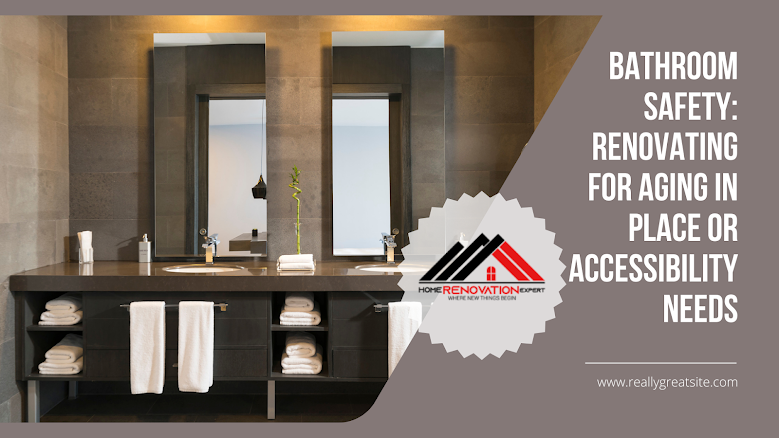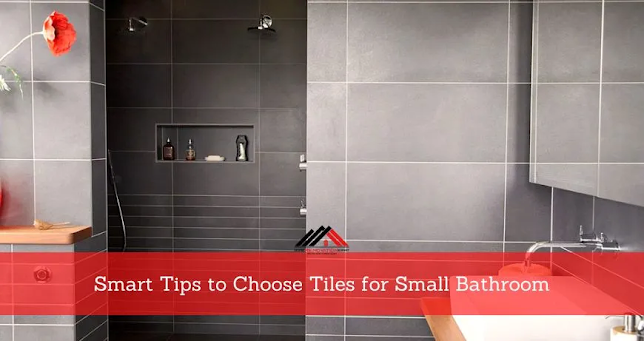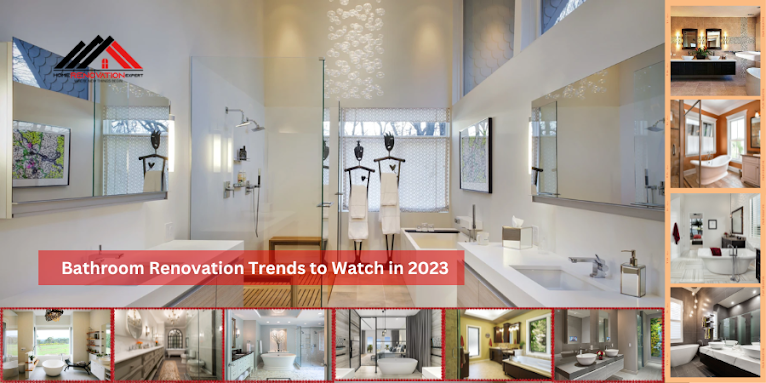Bathroom Safety: Renovating for Aging in Place or Accessibility Needs
As we go through life, our physical needs change, and our living spaces should adapt to accommodate those changes. One area where this is especially important is the bathroom. The bathroom is a space we use multiple times a day, and ensuring its safety and accessibility is crucial, particularly as we age or if we have accessibility needs. Renovating a bathroom to cater to these requirements is not only a practical step but also a way to maintain independence and quality of life. In this blog, we'll explore the importance of bathroom safety, discuss key considerations for renovating with aging in place or accessibility needs in mind, and offer some design tips to create a functional and beautiful space.
The Importance of Bathroom Safety
Bathrooms are known for their hard, slippery surfaces and tight spaces, making them potentially hazardous, especially for older adults or individuals with mobility challenges. Falls in the bathroom are a leading cause of injuries among seniors, which can lead to a loss of independence, reduced quality of life, and increased healthcare costs. Renovating your bathroom with safety in mind can significantly reduce these risks and provide peace of mind for both the individuals using the bathroom and their caregivers.
Key Considerations for Renovation
1. Flooring and Surfaces: Opt for slip-resistant flooring materials, such as textured tiles or vinyl. Avoid glossy finishes that can become slippery when wet. Installing grab bars near the toilet, shower, and bathtub can provide essential support.
2. Shower and Bathtub: Consider replacing traditional tubs with walk-in showers. These eliminate the need to step over a high barrier, reducing the risk of falls. Install built-in shower seats or benches to allow users to sit while showering.
3. Toilet Accessibility: Choose a comfort-height toilet that is higher than standard toilets, making it easier to sit down and stand up. Adding a grab bar next to the toilet enhances stability.
4. Sink and Countertop: Ensure the sink and countertop have knee clearance underneath to accommodate individuals who use wheelchairs or mobility aids. Choose lever-style faucet handles that are easier to operate than traditional knobs.
5. Lighting and Visibility: Adequate lighting is crucial to prevent accidents. Install bright, glare-free lighting fixtures. Consider adding motion sensor lights to guide the way at night.
6. Storage and Organization: Keep toiletries and essentials within arm's reach. Wall-mounted shelves or adjustable height cabinets can make accessing items easier without the need to bend or stretch.
Design Tips for Accessibility and Aesthetics
1. Color Contrast: Use contrasting colors between walls, floors, and fixtures. This helps individuals with low vision distinguish between different elements in the bathroom.
2. Non-Slip Mats and Rugs: Place non-slip mats or rugs near the shower, bathtub, and sink to provide additional traction.
3. Handheld Showerhead: Install a handheld showerhead with a flexible hose. This allows for targeted water flow and is helpful for individuals who may need to shower while seated.
4. Wide Doorways: If possible, widen the bathroom doorway to accommodate mobility aids like wheelchairs or walkers.
5. Visual and Tactile Cues: Incorporate visual and tactile cues, such as color-coded faucets and raised textures on grab bars, to assist individuals with limited vision.
6. Stylish Accessibility: Modern accessibility products come in a range of stylish designs. Choose fixtures and accessories that complement your bathroom's overall aesthetics.
Conclusion
Renovating a bathroom for aging in place or accessibility needs goes beyond functional adjustments; it's about creating a space that promotes safety, independence, and comfort. With careful planning, attention to detail, and the incorporation of universal design principles, a bathroom can be transformed into a sanctuary that caters to all individuals, regardless of their physical abilities or age. By investing in bathroom safety, we invest in the well-being and quality of life for ourselves and our loved ones.




Comments
Post a Comment